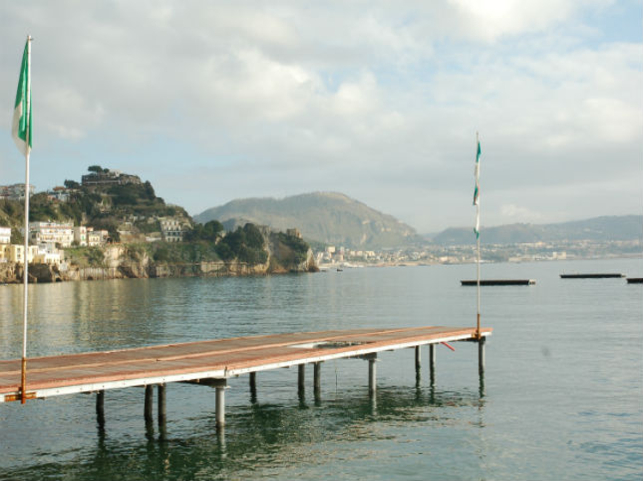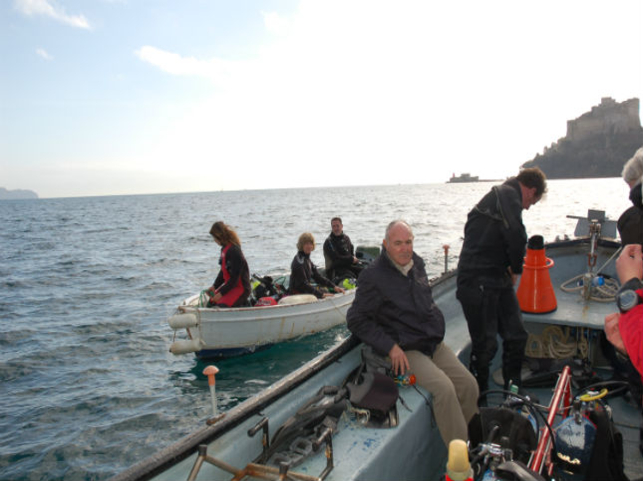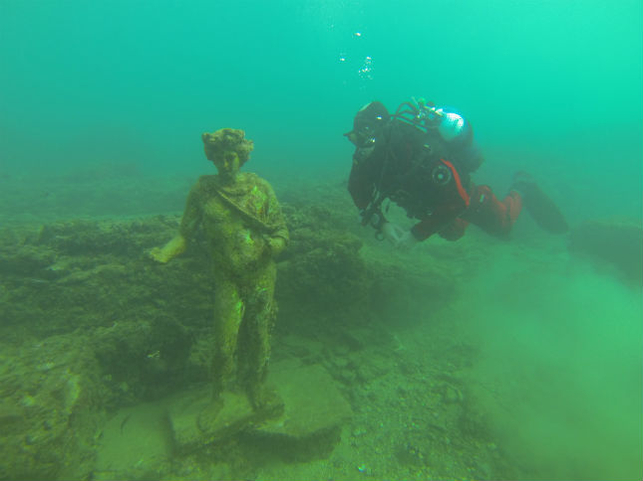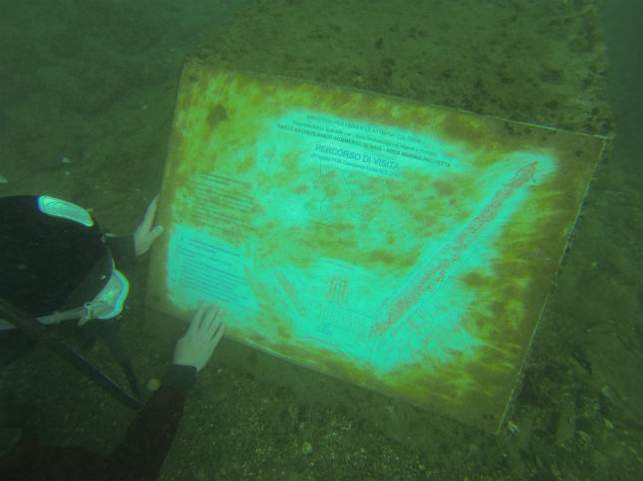SASMAP report on meeting of wp 6 in Baiae January 2013

SASMAP started in September 2012 to develop new technologies and best practices in order to locate, assess and manage Europe’s underwater cultural heritage in a more effective way than is possible today. For this, the project was divided in several work packages, each designated with a specific task. The aims for Work Package 6 (WP6) are:
• To develop assess and monitor the applicability of artificial seagrass to the in situ protection of underwater archaeological sites with wooden and stone remains.
• To evaluate the durability of man made materials used for the protection of underwater archaeological sites
The WP6 consortium decided at the start up meeting of SASMAP to meet again in Naples, Italy early 2013. The reason for this was to discuss the placement of the artificial seagrass at the underwater archaeological Roman site of Baiae. Also, it would be a good opportunity to talk over the rest of the work package.
Baiae is a small city, located at the bay of Naples and founded in the 2nd Century B.C. by the Romans. For hundreds of years it was a popular seaside resort for the Roman aristocracy and imperial family. But because of seismic activity in the region, large parts of the city sunk into the sea. These remains are nowadays an underwater archaeological park. (website: http://underwaterarchaeologicalparkbaia.blogspot.nl/)
The morning of the first day was spent on diving two locations of the sunken Roman city. Barbara Davidde showed the team around the mosaic floor of the Vila con ingresso a protiro and large wall with partly uncovered wooden foundation of the viridairum of the Villa dei Pisoni. The dive team was joined by employees from the park and the Nucleo Carabinieri Subacquei (Naples).
In the afternoon there were two lectures: one from Paulo Caputo, head of the Baiae underwater archaeological park, on the history of the site, and one from David Gregory on SASMAP. After this, Brian Smith and Alan Hall from SSCS demonstrated the artificial seagrass. They deployed a mat on the docks and explained and demonstrated its working principle.
The next morning two different locations were dived: the mosaic and marble floors in the Portus Iulius and replicas of statues at Ninphaeum of Punta Epitaffio.
After the lunch the consortium discussed, amongst other things, the location for the seagrass at Baiae, the purpose of the mats on each site and the monitoring.
The meeting was finished by a presentation on new mapping devices for underwater archaeological sites from Gabriele Gomez de Ayala, one of the guides of the archaeological park.
The plans for the near future are:
- In April, the team from the Dutch Cultural Heritage Agency will discuss with the plastics specialist from the National Museum in Denmark the strategy for sampling and researching the used in situ preservation materials.
- In May and June all the partners will place the artificial seagrass on their sites.




